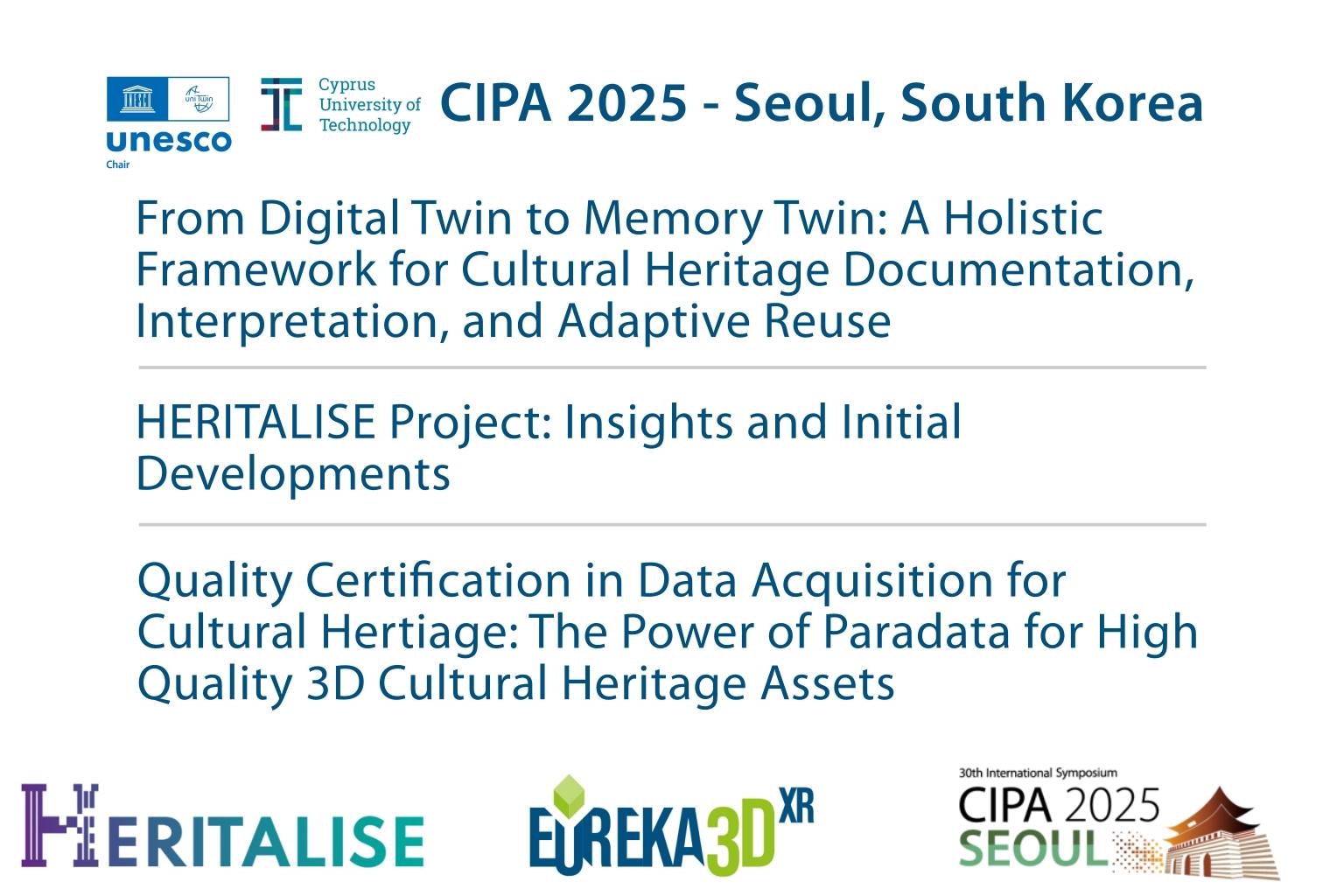
To the 30th CIPA International Symposium, UNESCO Chair for Digital Cultural Heritage, Heritage Malta and Fundación Tekniker will join as a team to present EUreka3D-XR project along with Heritalise EU Project.
The theme of the 30th CIPA 2025 Symposium is “Heritage Conservation from Bits: From Digital Documentation to Data-driven Heritage Conservation,” which focuses on the increasingly important role that data will play in the conservation of cultural heritage in the age of artificial intelligence and explores the trend towards data-driven heritage conservation through the creation and analysis of heritage data, and application of new technologies in the context of artifacts, archaeological sites, historic buildings, landscapes, museums, and more.
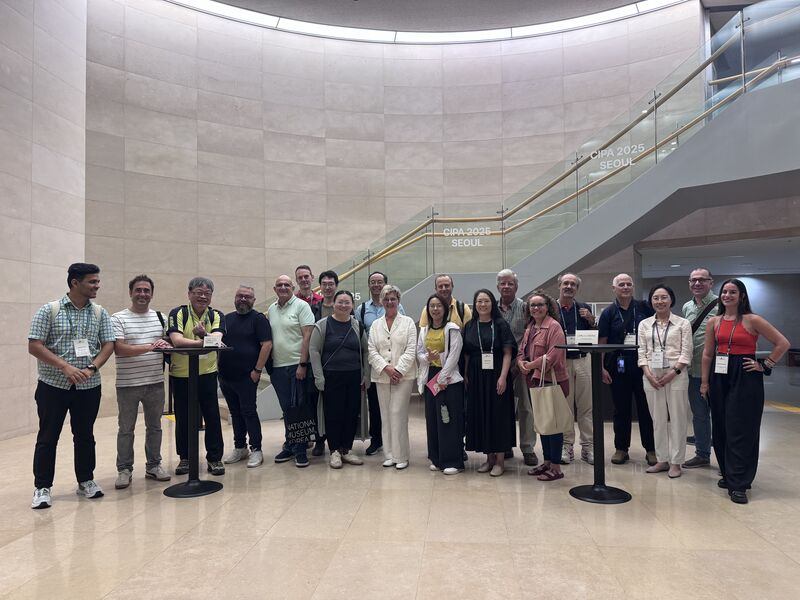
Through three presentations, a groundbreaking framework that goes beyond traditional 3D documentation, will be introduced. The Memory Twin concept integrates:
- Tangible heritage – accurate digital replicas of monuments, objects, and sites.
- Intangible heritage – stories, traditions, and cultural practices.
- Contextual data – metadata, paradata, and usage history woven into the digital record.
Additionally, during the presentation a special focus will be reserved to quality certification during 3D data acquisition, paradata, metadata, transparency, credibility, future-proofing, and more.
Find the provisional programme and attitional information here.
You can register at this link.



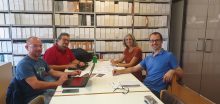
 The
The 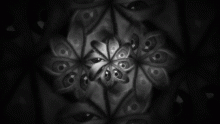
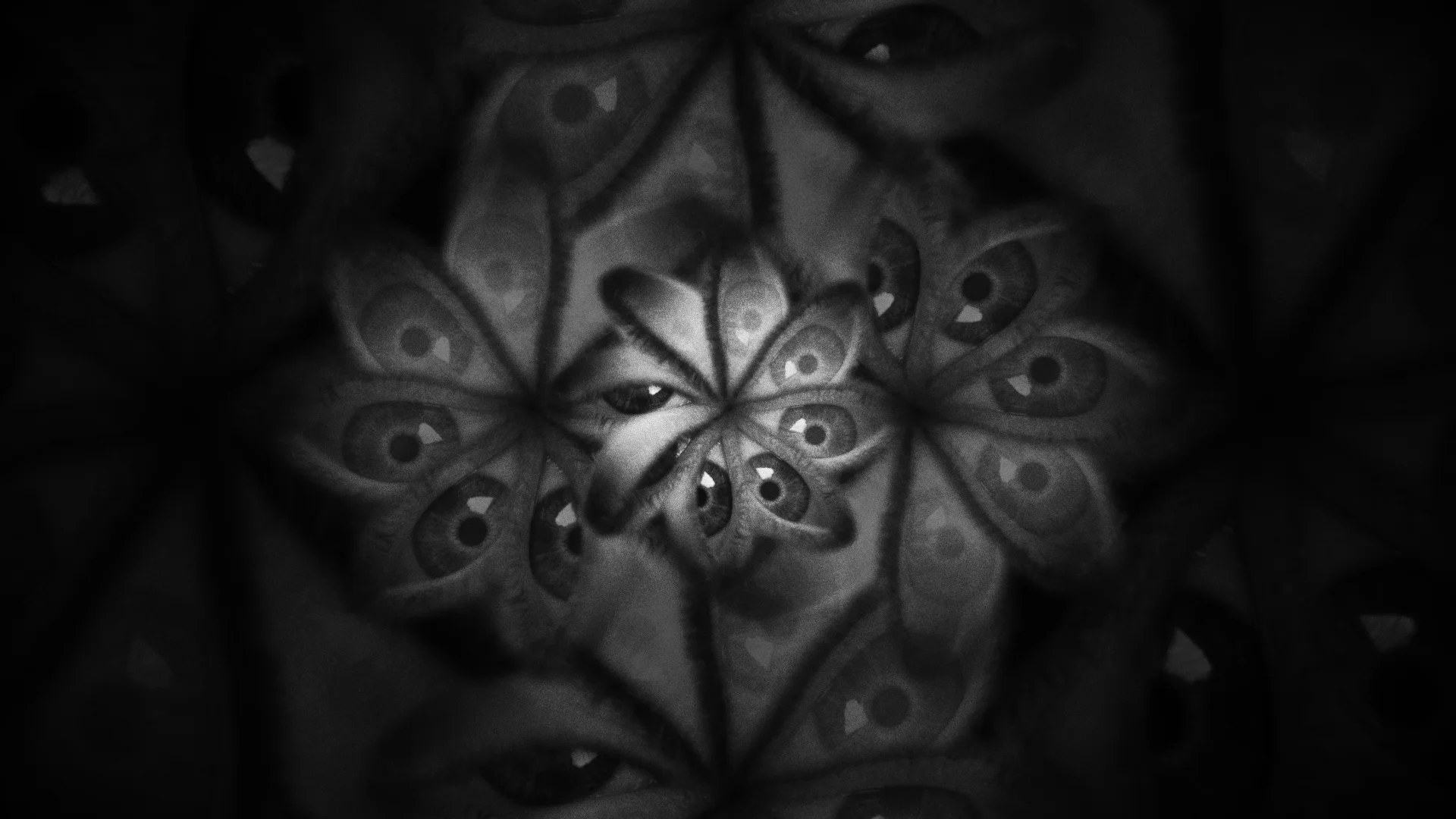
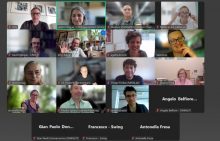
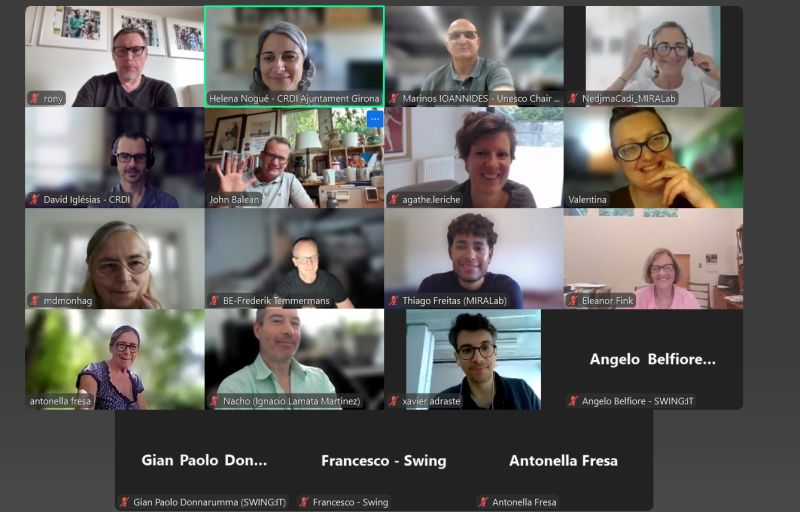



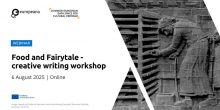
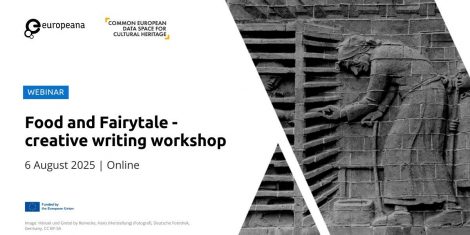
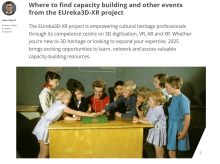
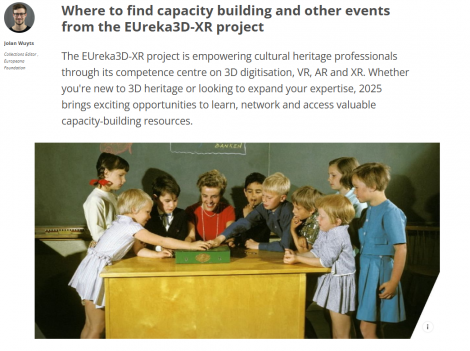 Discover the next appointments from EUreka3D projects: capacity building, conferences, formus and more are waiting for you!
Discover the next appointments from EUreka3D projects: capacity building, conferences, formus and more are waiting for you!
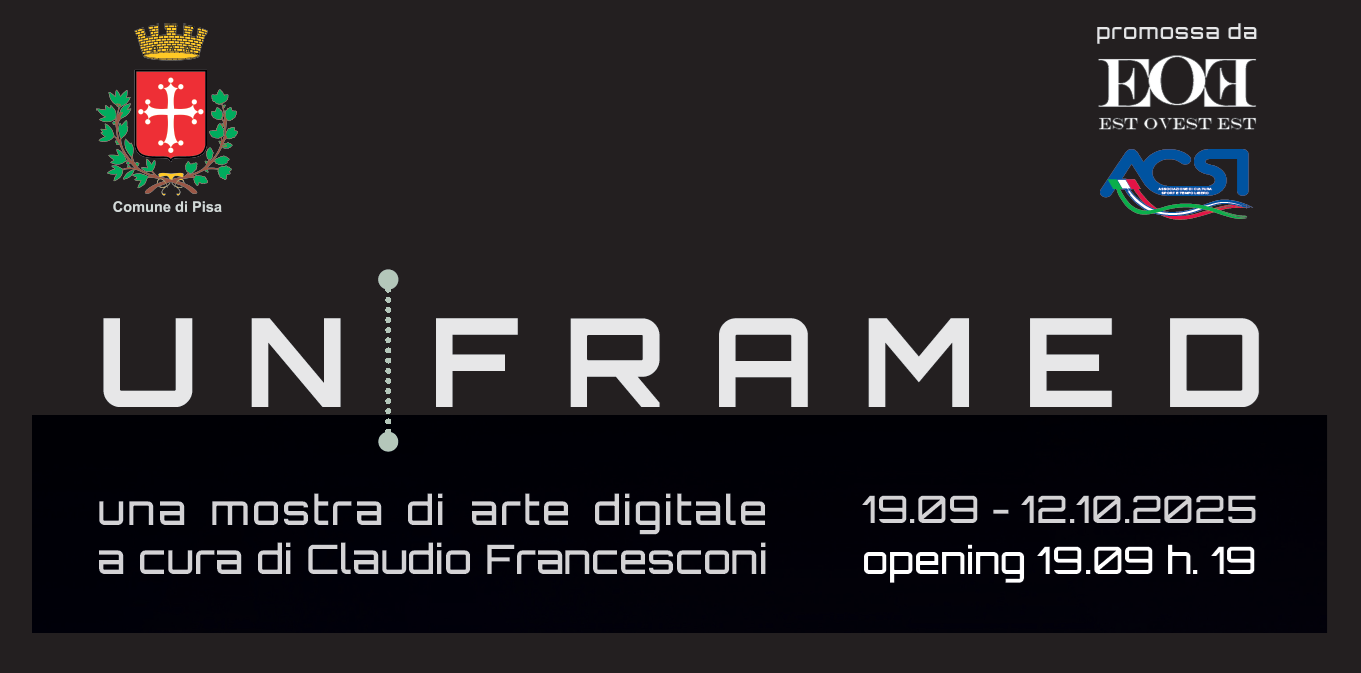

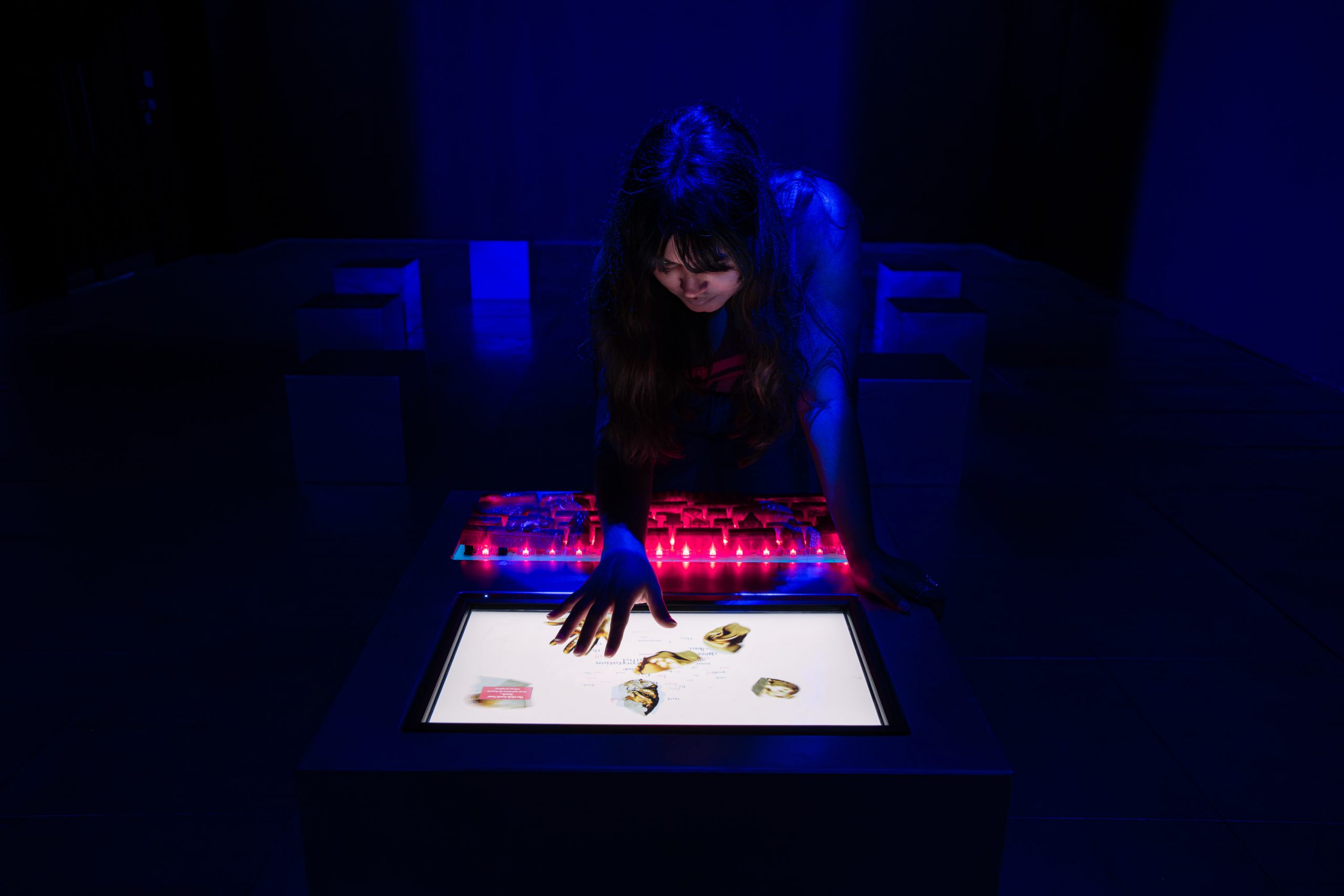
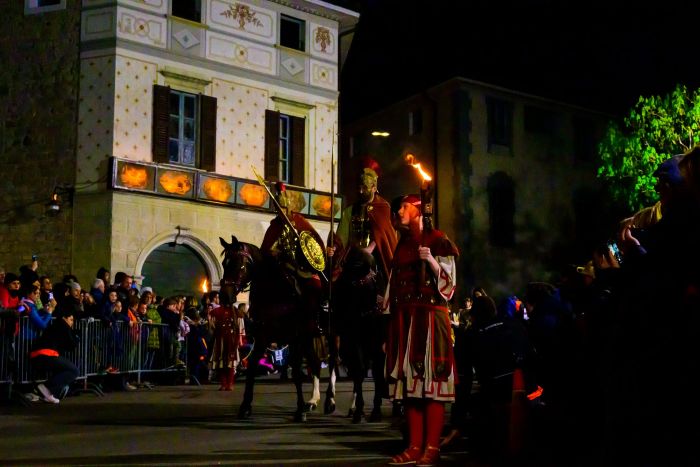
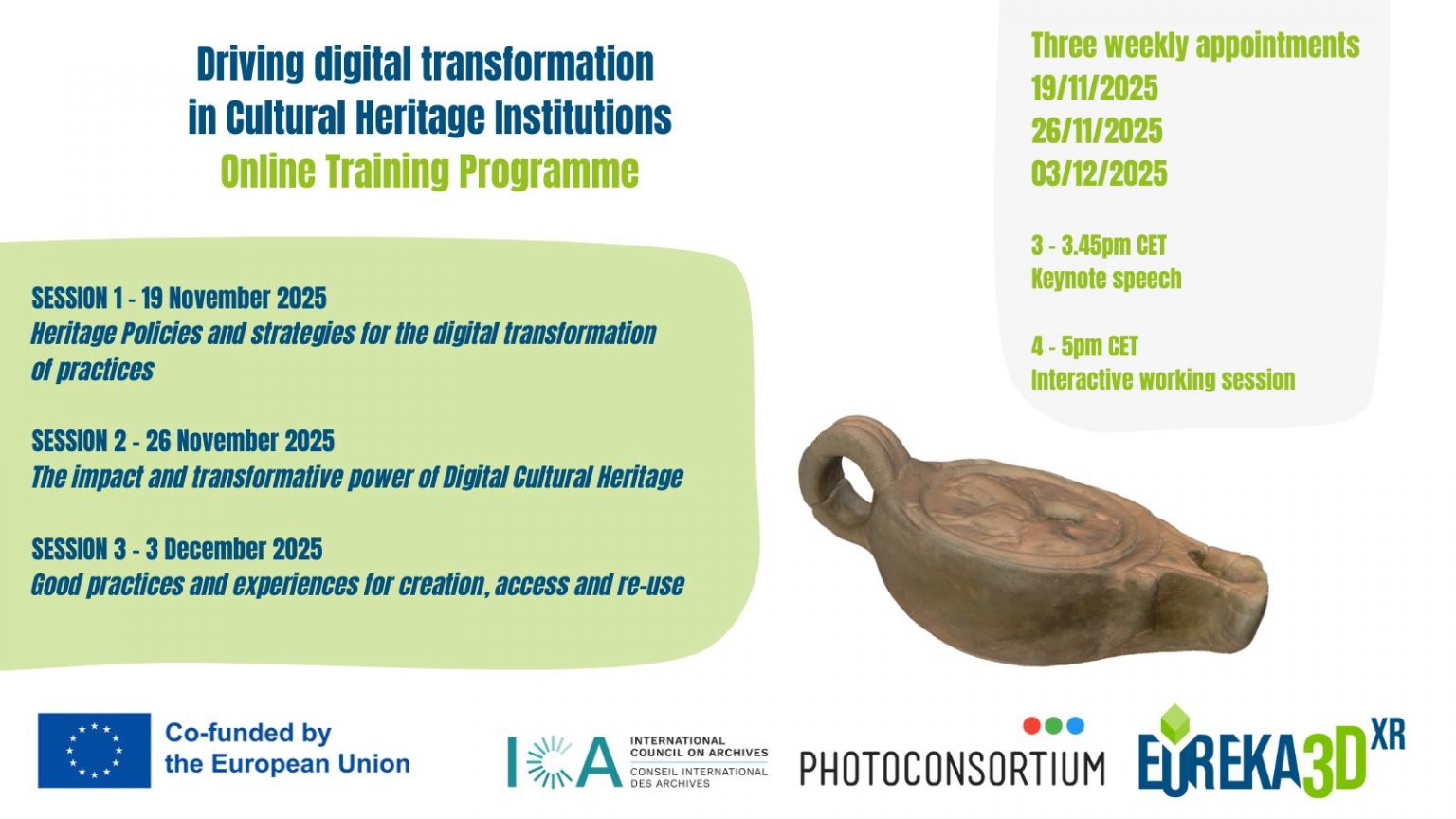
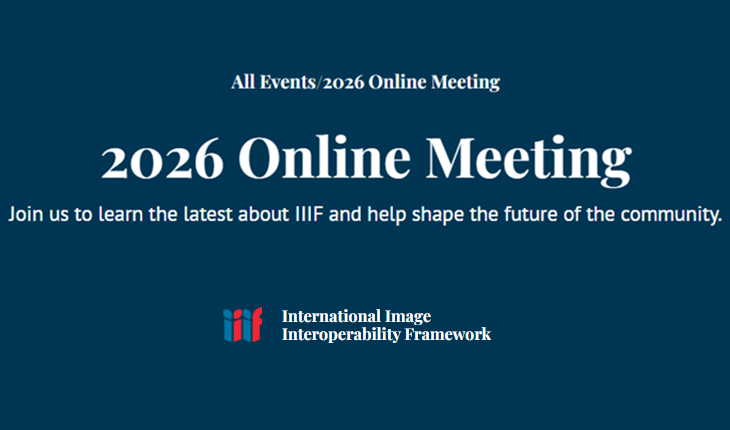
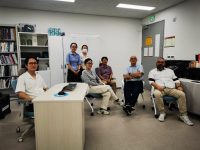
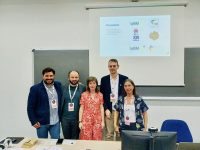


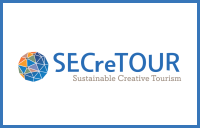
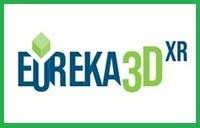
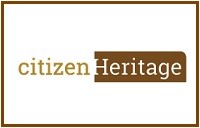

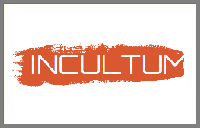
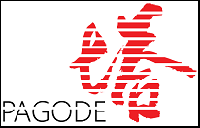
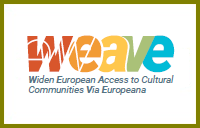


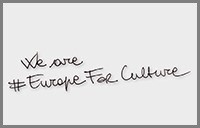
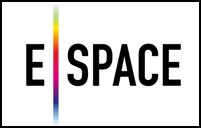
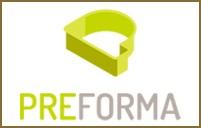
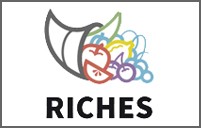
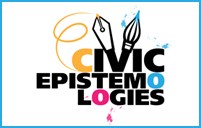

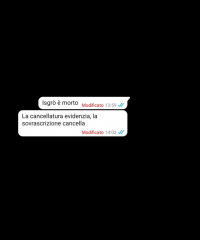
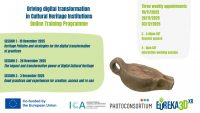


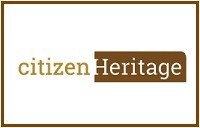
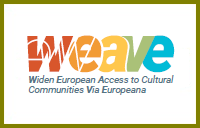

EUreka3D-XR partner Swing:IT Software Engineering Italia S.r.l. team met CRDI Ajuntament de Girona for two fruitful days of work, planning and progressing on the virtual visualisation of the Girona historical walls, one of the three XR scenarios developed in the project.
The pilot is about using archival materials to reconstruct in 3D the medieval walls of the city of Girona (Catalonia, Spain); and to reuse such reconstruction for an AR walking tour using a mobile device. The walls were partly demolished at the beginning of the 20th century because of the new urban setting of the city, and so archaeological restoration was not possible anymore.
In the EUreka3D-XR project, 3D modelling and XR allow to go back to history and recover what was destroyed at that time. Based on cartography, engravings, photography, films and textual records, we will be able to visualise the walls again with a very realistic approach. Using the AI 3D Builder tool that partner project Swing:It is developing, an advanced AI-powered software pipeline to generate 3D models from 2D image collections, it will be possible to recreate very realistic 3D models of the demolished walls. To enable users and tourists to access this reconstruction, the 3D XR Studio, a web-based editor complemented with a mobile application, will allow to create an XR experience aceesible on site.
In November 2025 the first prototype of the tools is expected to be released, and the Girona walls scenario will be presented in its first version during a demo event set in Girona at the end of January 2026.
Read more about the Pilot on project website: www.eureka3d-xr.eu